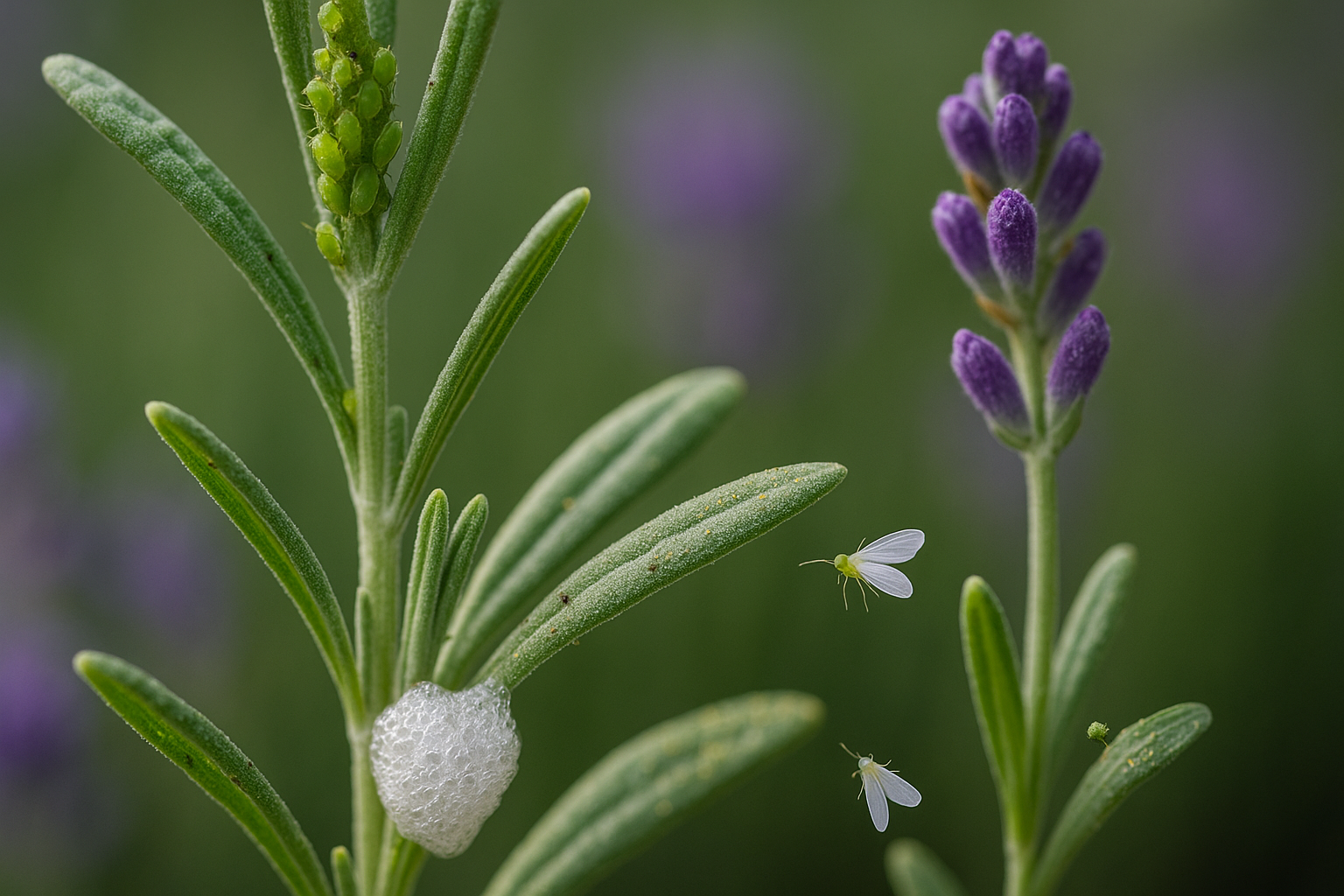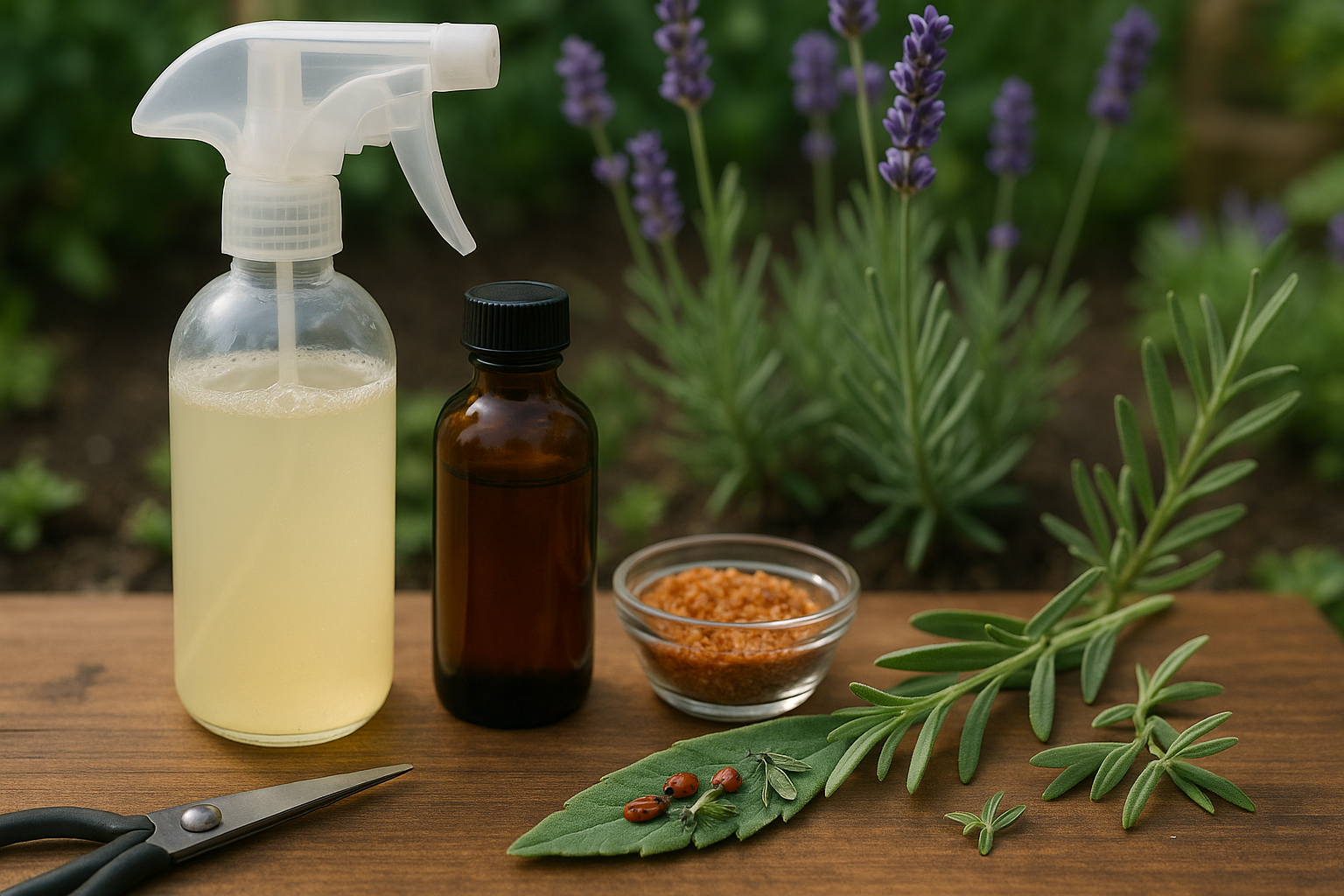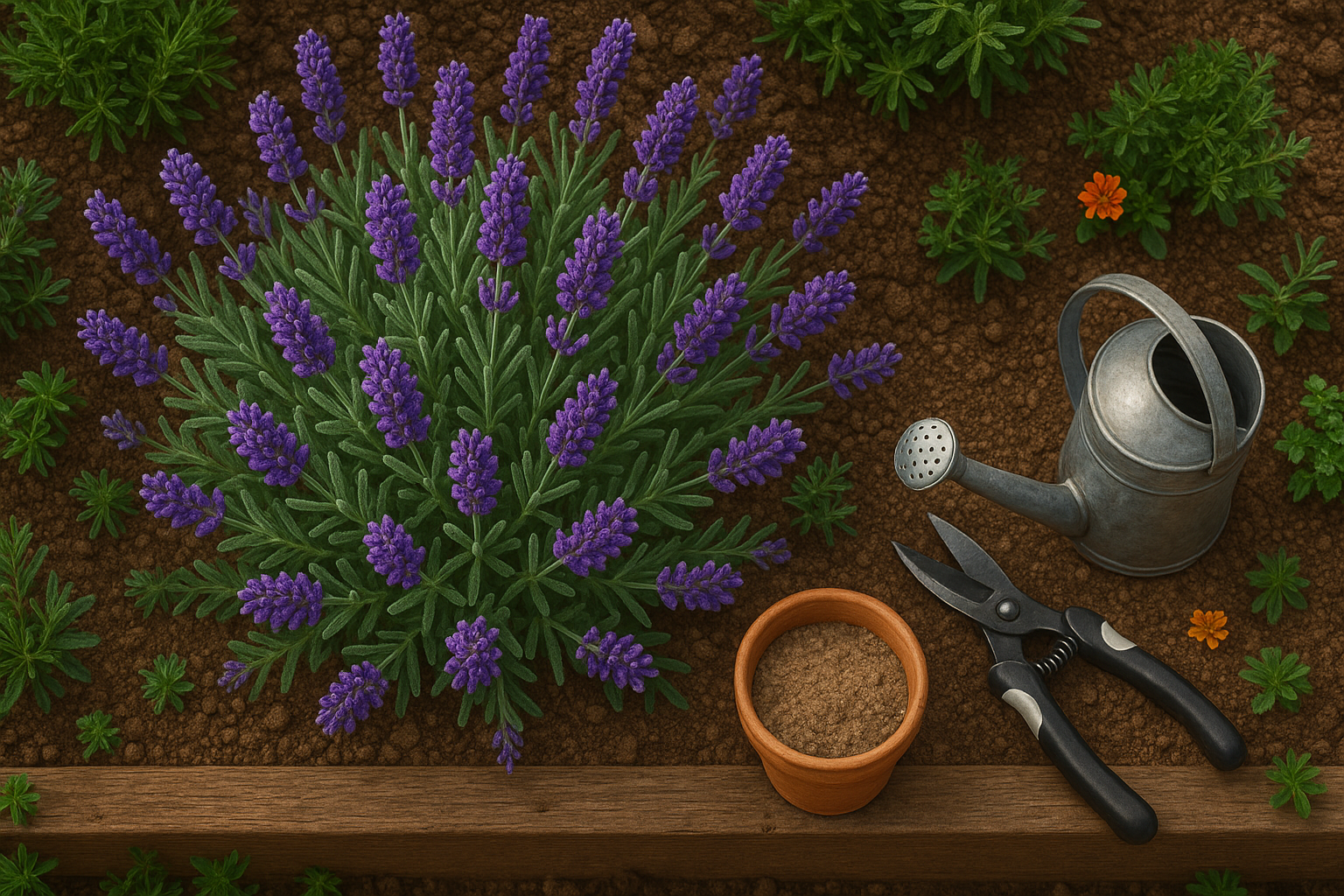Understanding Common Lavender Pests

Lavender, known for its sweet scent and hardy nature, is not completely immune to pest infestations. While its aromatic oils can deter some insects, certain pests are still drawn to its soft leaves and stems, especially when the plant is stressed due to overwatering, poor airflow, or overcrowded beds.
Aphids are among the most frequent invaders—tiny green, yellow, or black insects that cluster on new growth, secreting sticky honeydew that can lead to sooty mold. Spittlebugs are easily spotted by their distinctive frothy “spittle” masses on stems and leaves, which can stunt growth if left unchecked.
Whiteflies are another concern; these minuscule white, moth-like bugs cluster on the undersides of leaves and rapidly multiply, sapping the plant’s vigor and causing yellowing. Leafhoppers, small wedge-shaped insects, feed on plant sap and leave behind telltale chlorotic (pale or yellow) speckles on foliage, sometimes encouraging the spread of plant diseases.
Early detection is key to saving your lavender—look for curled, yellowing, or speckled leaves, sticky residue, white fuzz, or frothy patches, and a general decline in plant vigor. Regularly inspecting your plants, especially the undersides of leaves and around new shoots, will help you spot infestations at the first sign, making control far easier and keeping your lavender healthy and beautiful all season long.
Recognizing Lavender Disease vs. Pest Damage
When your lavender looks unhealthy, it’s important to quickly determine whether you’re dealing with a disease like root rot or a pest problem. Diseases such as root rot usually show up as yellowing leaves, wilting or drooping despite moist soil, and dark, mushy roots if you gently lift the plant. The plant may also have a foul smell at the base.
In contrast, pest infestations present very different clues. Look for sticky residue (called honeydew) on leaves or stems, which is a sure sign of sap-sucking insects like aphids or whiteflies. Distorted or curling new growth, tiny holes in leaves, and visible insects or webbing often signal a pest issue.
For a quick diagnosis, check the soil and roots: if the roots are black and slimy, it’s likely rot—especially if the lavender is getting plenty of water. If you spot small bugs, webbing, or sticky patches on foliage, you’re probably dealing with pests.
With diseases, damage tends to spread from the roots upward and often affects the whole plant at once, while pest symptoms are usually scattered and most visible on young or tender leaves. Regularly inspecting your lavender up close is the best way to catch and treat either issue before it gets out of hand.
Prevention Is Key — Keeping Lavender Healthy
Keeping your lavender plants healthy starts with a few simple practices that make a big difference in preventing pest problems. Begin by giving each plant enough space—lavender thrives with good airflow, which helps keep fungal issues and unwanted insects at bay. When you crowd your plants, you create the humid, stagnant conditions that pests love.
In the garden, sandy, well-drained soil is best for lavender. Mixing in a bit of sand or small gravel before planting can help prevent root diseases that weaken plants and attract pests. Regular plant inspections are important, too. A quick look at stems and leaves every week can catch pest activity early, letting you remove offenders by hand before they multiply.
Cleanliness really counts: remove fallen leaves, old blooms, and any garden debris around lavender to deny pests easy hiding spots. Always deadhead faded blooms to encourage strong, healthy growth.
For an extra layer of protection, try companion planting—pair your lavender with herbs like rosemary and thyme or flowers such as marigolds. These companions not only look great but also emit scents that naturally discourage aphids, moths, and other common pests.
By emphasizing prevention through smart garden habits, you’ll spend less time troubleshooting problems and more time enjoying fragrant, flourishing lavender beds.
Natural Solutions for Controlling Lavender Pests

Controlling pests on your lavender plants doesn’t have to involve harsh chemicals—many natural solutions are safe, effective, and easy to try at home.
Insecticidal soap is a popular choice for tackling soft-bodied pests like aphids and whiteflies; simply mix a tablespoon of mild liquid soap with a quart of water and spray directly on affected leaves.
Neem oil, derived from the neem tree, offers another environmentally friendly remedy. Mix one to two teaspoons of neem oil with a quart of water, add a few drops of dish soap, and spray your lavender once a week, focusing on both sides of the leaves.
For a quick DIY fix, blend one garlic clove, a small onion, and a dash of cayenne pepper with water. Strain and spray this mixture to repel common pests.
Using Beneficial Insects
Beyond sprays, beneficial insects like ladybugs and lacewings are invaluable allies—they naturally feed on aphids, caterpillars, and thrips. You can often purchase these insects online or at garden centers. Release them in the evening when it’s cooler to encourage them to settle in your garden.
Physical Controls
Physical controls also make a difference:
- Regularly inspect your lavender for pests and pick them off by hand (gloves help if you’re squeamish).
- Use a strong jet of water from your hose to dislodge aphids and spider mites.
By combining these natural approaches, you’ll help keep your lavender healthy and thriving without resorting to synthetic chemicals—plus, you’ll create a more biodiverse and balanced garden where your plants and pollinators can flourish together.
Integrated Pest Management for Lavender Gardens
Integrated Pest Management (IPM) is a smart, layered approach that helps you protect your lavender garden from pests while keeping your plants and the environment healthy.
Monitoring Your Garden
The first step is regular monitoring—walk through your garden weekly, looking closely at lavender stems and leaves for signs like holes, discoloration, or sticky residue. Use a hand lens if needed, and keep notes or photos to track pest activity. Accurate identification is key before taking action, as many garden bugs are actually beneficial predators or pollinators.
Prevention Strategies
Next, prevention plays a big role in any IPM plan. Encourage natural predators by planting nectar-rich flowers nearby, and use mulches or sticky traps to deter crawling pests. Healthy, stress-free lavender is also far less attractive to pests, so be sure your soil drains well and airflow between plants is good.
Controlling Pests
If pest numbers creep up, start with natural controls:
- Pick off large insects by hand
- Spray pests with a strong stream of water
- Use insecticidal soaps and neem oil, which are less toxic to pollinators and humans
Reserve chemical pesticides as a last resort, and always choose targeted products to minimize harm to your garden’s ecosystem.
Adjusting Your Approach
Document what works (and what doesn’t), adjusting your plan as seasons and pest populations change. By layering these methods, you can manage lavender pests effectively, maintaining a thriving, eco-friendly garden with the least impact possible.
Troubleshooting Persistent Lavender Pest Problems
If natural pest control methods like handpicking bugs or spraying neem oil aren’t solving your lavender’s pest issues, it’s time to step up your game carefully. First, double-check your garden hygiene: remove all affected foliage, clean up fallen leaves, and prune overcrowded stems to improve airflow.
Sometimes pests persist because of nearby hiding spots or excess moisture, so be sure to check under pots and around mulch. If infestations like relentless aphids or spittlebugs continue, it’s a good idea to consult a local nursery, garden center, or agricultural extension office. Experts can help identify the specific pest and suggest targeted solutions.
While chemical pesticides are best avoided to protect lavender’s delicate ecosystem and pollinator friends, emergency options such as insecticidal soaps or horticultural oils are generally safer. These can help curb outbreaks if used sparingly and according to label instructions.
After dealing with pests, support your lavender’s recovery by feeding it a balanced organic fertilizer and ensuring it gets at least six hours of sunlight daily. Good drainage is also crucial, as stressed or waterlogged plants are more vulnerable to problems.
To prevent pests from returning, make a habit of regular inspections, keep your soil healthy with compost, and attract beneficial insects—like ladybugs or lacewings—by planting companion herbs such as rosemary and thyme. With these steps, your lavender should regain its vigor and remain beautiful, fragrant, and pest-resistant all season long.
Final Thoughts & Seasonal Reminders for Lavender Care
Keeping lavender healthy and mostly pest-free starts with simple habits—regularly check your plants for early signs of trouble like yellow leaves or tiny bugs, so you can act fast. Natural pest control methods, such as planting lavender in well-draining soil, pruning for airflow, and using companion plants like rosemary or thyme, can prevent infestations without chemicals.
Seasonally, remember to water sparingly in cooler months to avoid root rot and trim back faded blooms in late summer to boost next year’s growth. By staying observant and tending your lavender as the seasons change, you’ll help your plants thrive year after year.
